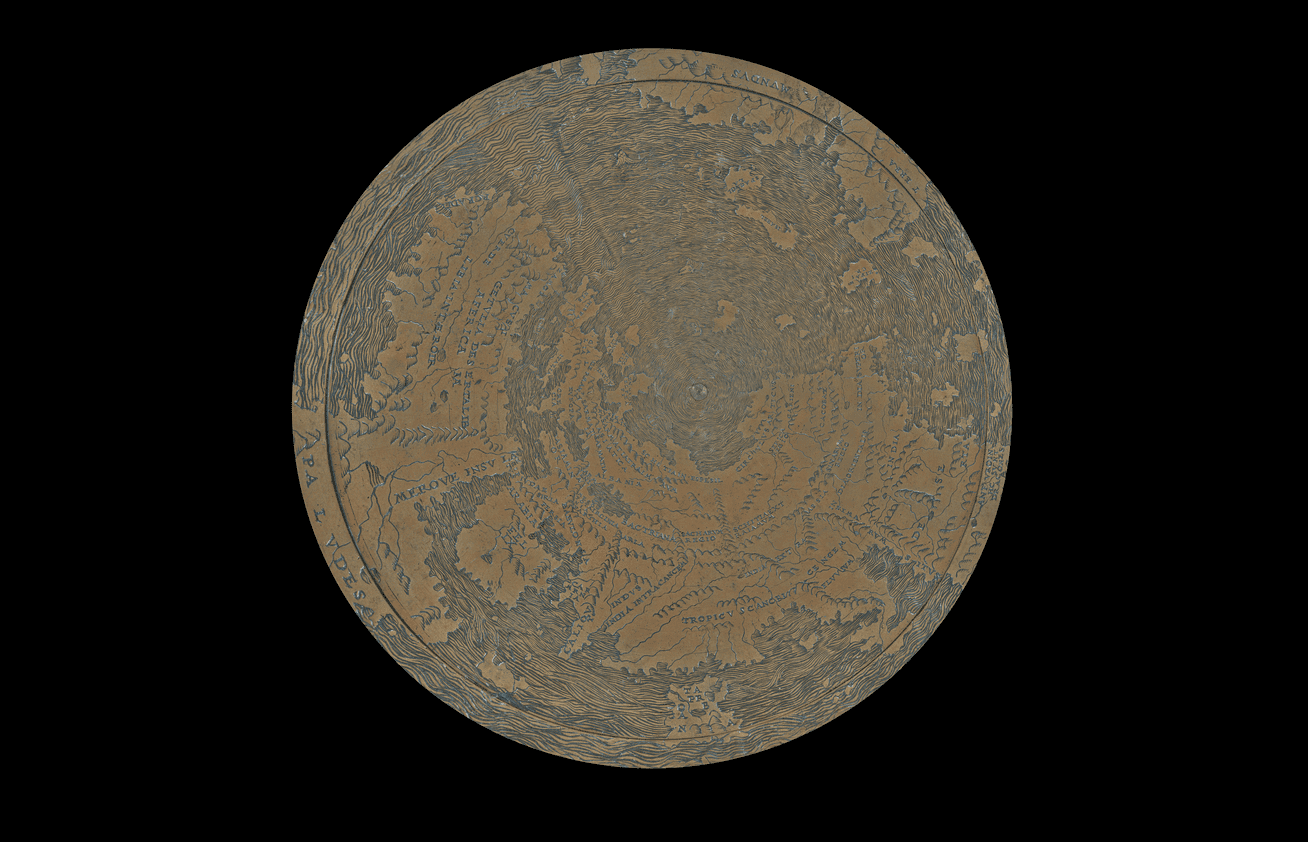It’s a common trope of fiction that maps from ye olde times bare the small print “here be dragons” warning of where untold dangers lie. It stems from the age-old tradition of medieval cartography to include illustrations of sea monsters and other mythological beasts on uncharted areas of maps. Truth be told, however, it’s exceptionally rare to find the slogan on a historical map.
The most prominent use of the phrase “here be dragons” can be found on the Hunt–Lenox Globe, the third-oldest known terrestrial globe dating from around 1508. Along the eastern coast of Asia, it bears the words “HIC SVNT DRACONES,” which is Latin for “here be dragons.”
This was thought to be the only known use of the phrase, but the same inscription has also been found on the Ostrich Egg Globe, a mysterious object made around 1504 from the joined lower halves of two ostrich eggs.
Images of dragons on maps are slightly more common, although are still pretty rare. One example is the Borgia map, a world map engraved on a metal plate sometime in the early 15th century, which features a drawing of a dragon on its peripheral near the area that depicts Asia.
A beautiful 19th-century Japanese map, called “Jishin-no-ben” which means “The Story of the Earthquake,” depicts a dragon in the shape of an ouroboros outlining the map. However, it looks very different from the use of dragons found in European cartography.

A view of the northern hemisphere on the Hunt–Lenox Globe, made in European around 1510 CE.
Image credit: The New York Public Library
Another variation of this phrase is “hic sunt leones,” translated from Latin to mean “here be lions.” However, it is more frequent for maps to feature the words “Terra incognita,” which means “Unknown land” in Latin.
Equally, there is a rich history of medieval and Renaissance cartographers doodling sea monsters on their maps. In the book Sea Monsters on Medieval and Renaissance Maps, historian of cartography Chet Van Duzer overviews the surprisingly deep history of including mythological aquatic creatures on maps.

Close-up view of the decorative dragons at the bottom of the 1265 Psalter world map.
Image credit: Public Domain.
In his view, map-makers of the past didn’t include these beasts for decoration or as a metaphor for some kind of unknown peril. Instead, he believes that cartographers of yore genuinely believed these monsters existed and, just like any natural feature, it was the duty of the designer to include it on the map.
He notes that sea monsters start to disappear from maps at the end of the 16th century in the wake up of the Age of Exploration. Not only did rationality and science become the order of the day, but explorers started to learn that these fearsome animals only lived in the minds of terrified sailors.
Source Link: Here Be Dragons: Did Maps Of Yore Really Warn Of Mythical Beasts?